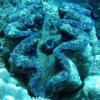Search the Community
Showing results for tags 'scents'.
-
Scents of Australia Blackstone Inks have released a set of inks called Scents of Australia. FPN member Jamerelbe has already done a set of reviews on them, as has member Lgsoltek, so I thought I would do a comparative review, between the six inks, and a couple of others for comparison. The six inks are Australian Bush (khaki green), Blue Gum (dark teal blue), Blue Cypress (greeny blue), Red Kunzea (red), Wild Orange (orange) and Brown Boronia (brown). The scents are floral, but apart from the Wild Orange (which has a citrus-y smell) I can’t vouch for the accuracy of the other scents. The Aus. Bush definitely has a scent of clean, mild Eucalyptus. The scents are not intense. You can smell them when you open the lid of a bottle, and if you hold the nib up to your nose, but once the ink has been written and dried, you can’t smell anything. What has taken some time has been working up a suitable method to do the comparisons. I have a set of 3 Jinhao X-750 pens, all adjusted to be similar in wetness, and with Asian Medium nibs, so I did three inks at a time. I wrote samples on 4 different papers — old stock Reflex (OSR) to demonstrate a poor quality paper, Fuji-Xerox Sustainable Earth (FXSE) and J. Burrows Premium (JBP) for medium quality office paper and Japanese Muji paper to show shading and sheen. Because I had three similar pens, I did three inks at a time, starting with the Blue-Green inks, followed by the Red-Orange inks. Above the Blue-Green I did a comparative sample of Monteverde Horizon Blue (a well-behaved Medium-Wet ink) and below a sample of Pelikan 4001 Royal Blue (a Medium-Dry ink). The Australian Bush sample came as a pre-release version called Gum Trees. The other five samples are retail versions. Results The Scented Inks are, generally, wettish inks, but they are quite well behaved on modern papers. Most of them are wetter than the Monteverde Horizon Blue, but there is some spread between them. The Australian Bush is the wettest of the six inks, and the Brown Boronia is definitely the driest. The other four — Blue Cypress, Blue Gum, Red Kunzea and Wild Orange are in between, and pretty much the same degree of wetness. None of the scented inks showed any feathering on any of the papers, although the Monteverde H.B. showed a little on the old stock Reflex. All of the inks showed some degree of bleeding on the OSR, with the Pelikan 4001 Royal Blue, the Brown Boronia and the Wild Orange showing the least. There was no bleeding on any of the other papers. The only ink to show any spreading at all was the Australian Bush, the wettest of the inks. The Blue-Green inks all showed noticeable shading on all the papers except the OSR. The Blue Gum showed the greatest degree of shading. As well, examination of the edges with a loupe show a degree of sheen. There was little to no shading or sheen demonstrated by any of the Red-Orange inks. The inks are all far too wet to be used in a dip pen – they need to be used in a fountain pen with a proper feed. Five of the six inks appear to be quite saturated, the exception being the Brown Boronia. I can’t tell if it is the dyes used, or the concentration, but the Brown Boronia doesn’t appear to be much more intense than the Pelikan Blue. The Scans There are lots of images here, because I scanned on four types of paper, and showed the back of two of them. First, the best paper, Muji Refill paper. I only did the front, because there was nothing to show on the back. Muji Front Next, the worst paper, old stock Reflex, showing the front, and bleeding on the back OSR Front OSR Back Finally, the middle-of-the-range paper, J.Burrows Premium JBP Front JBP Back I haven't included the Fuji-Xerox sample because it duplicates the J.Burrows Premium results.

